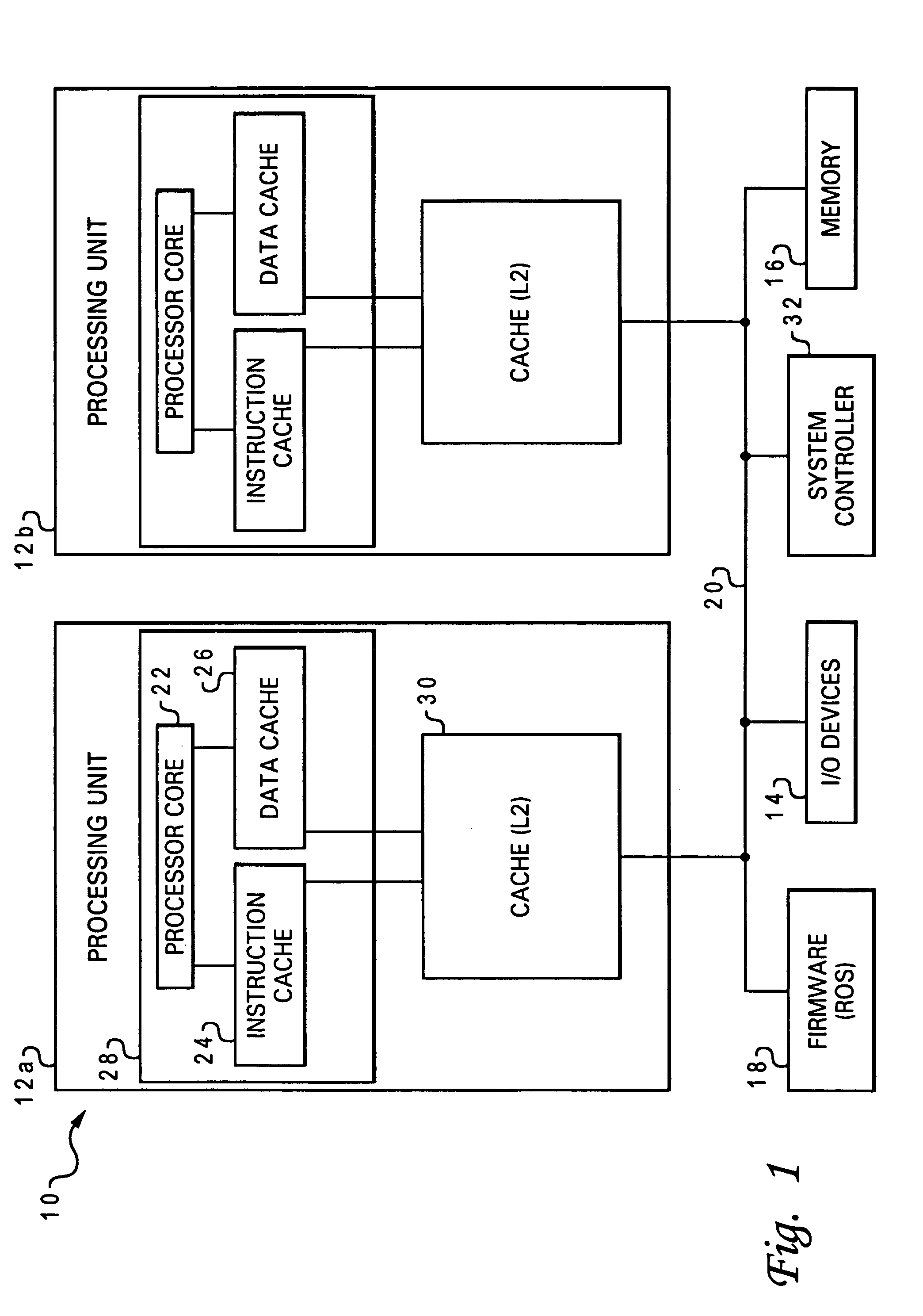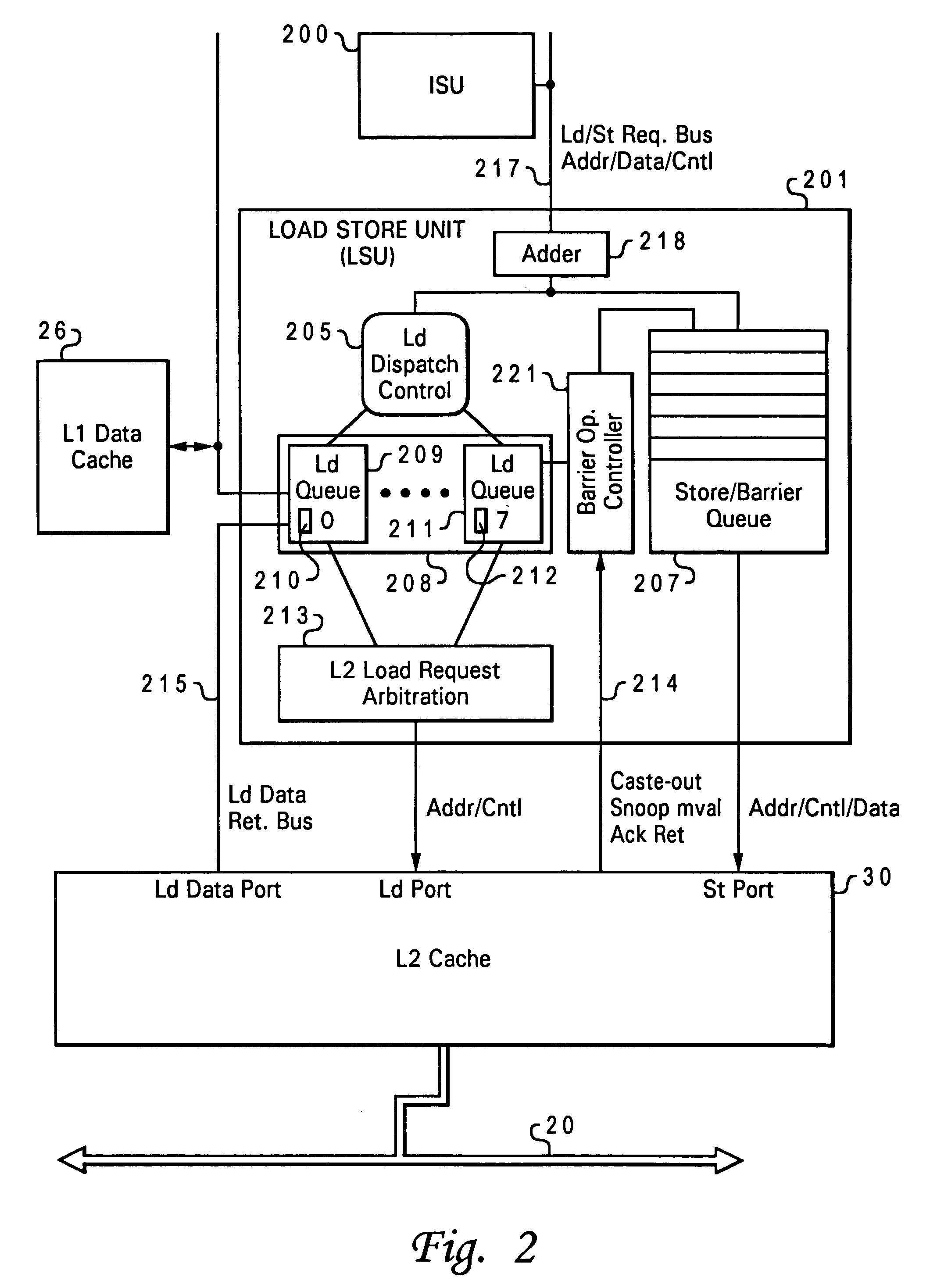System and method for enabling weak consistent storage advantage to a firmly consistent storage architecture
a storage architecture and weak consistency technology, applied in the field of data processing systems, can solve the problems of inability to process speculative data, inability to store instruction sequences, and inability to execute instructions in sequence, etc., and achieve the effect of efficiently processing load/storing instruction sequences
- Summary
- Abstract
- Description
- Claims
- Application Information
AI Technical Summary
Benefits of technology
Problems solved by technology
Method used
Image
Examples
Embodiment Construction
[0041]With reference now to the figures, and in particular with reference to FIG. 1, there is illustrated a high level block diagram of a multiprocessor computer system in which the present invention may be implemented. Computer system 10 has several processing units, two of which, 12a and 12b, are depicted. Processing units 12a and 12b are connected to various peripheral devices, including input / output (I / O) devices 14 (such as a display monitor, keyboard, graphical pointer (mouse), and a permanent storage device or hard disk), and system controller 32. Peripheral devices also include memory device 16 (such as random access memory or RAM), which is used by the processing units to carry out program instructions, and firmware 18, whose primary purpose is to seek out and load an operating system from one of the peripherals (usually the permanent memory device) whenever the computer is first turned on. Processing units 12a and 12b communicate with the peripheral devices by various mean...
PUM
 Login to View More
Login to View More Abstract
Description
Claims
Application Information
 Login to View More
Login to View More - R&D
- Intellectual Property
- Life Sciences
- Materials
- Tech Scout
- Unparalleled Data Quality
- Higher Quality Content
- 60% Fewer Hallucinations
Browse by: Latest US Patents, China's latest patents, Technical Efficacy Thesaurus, Application Domain, Technology Topic, Popular Technical Reports.
© 2025 PatSnap. All rights reserved.Legal|Privacy policy|Modern Slavery Act Transparency Statement|Sitemap|About US| Contact US: help@patsnap.com



